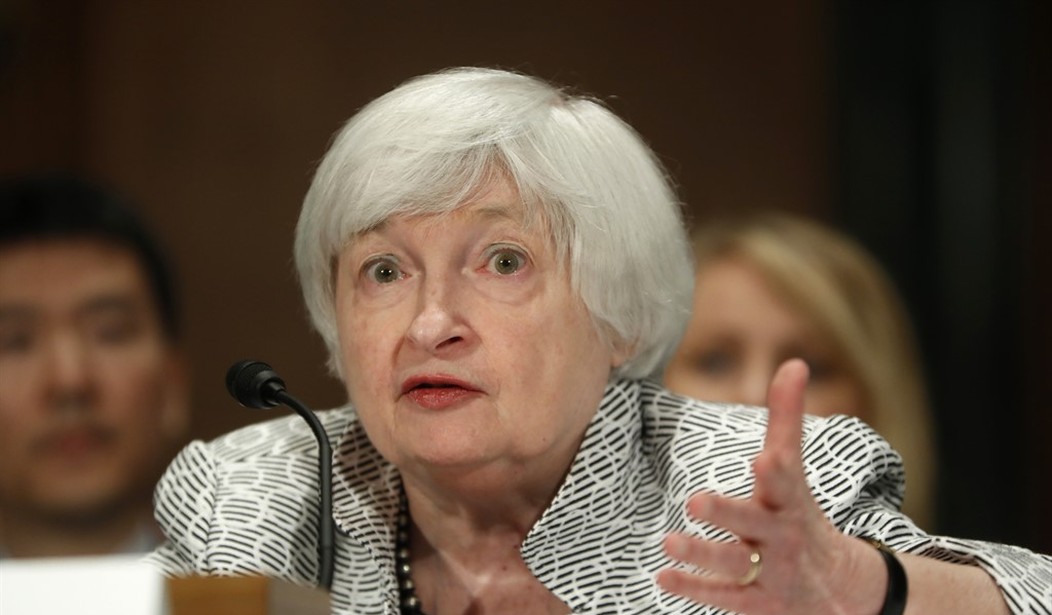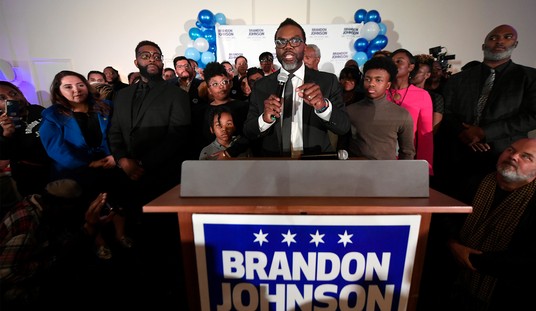Will Janet Yellen continue promoting this economy as “back on track” even after this Census Department report on retail sales? If so, perhaps we need to know which track the Treasury Secretary has in mind, and where it leads. Based on the nearly two-point reversal from October — before adjusting for inflation — it looks like the Last Train to Darksville:
Advance estimates of U.S. retail and food services sales for November 2022, adjusted for seasonal variation and holiday and trading-day differences, but not for price changes, were $689.4 billion, down 0.6 percent (±0.5 percent) from the previous month, but up 6.5 percent (±0.7 percent) above November 2021. Total sales for the September 2022 through November 2022 period were up 7.7 percent (±0.5 percent) from the same period a year ago. The September 2022 to October 2022 percent change was unrevised from up 1.3 percent (±0.2 percent).
Retail trade sales were down 0.8 percent (±0.5 percent) from October 2022, but up 5.4 percent (±0.7 percent) above last year. Gasoline stations were up 16.2 percent (±1.6 percent) from November 2021, while food services and drinking places were up 14.1 percent (±3.0 percent) from last year.
October showed a burst of activity in retail trade sales, having shot up 1.3% over September, which also had a negative number. That suggests that the October sales included a lot of demand-shifting, likely from the normal holiday-sales boost that should have started last month. That may have been the result of concerns over supply chains, rising prices, or just too many discounts to resist early purchases.
Once again, the “not for price changes” reminds us that these are not inflation-adjusted figures. Inflation ran higher in October (0.4%) than in November (0.1%), but that’s of little consequence here. The inflation in November means the real sales dropped off at least a little more than the nominal numbers suggest.
Earlier today, the Wall Street Journal headlined this drop as the biggest in nearly a year. They later changes the headline, but still pointed out the “abrupt shift” in consumer behavior:
November retail sales fell 0.6% from the prior month for the biggest decline this year, the Commerce Department said Thursday. Budget-conscious shoppers pulled back sharply on holiday-related purchases, home projects and autos. Manufacturing output declined 0.6%, the first drop since June, the Fed said in a separate report. …
The drop in November manufacturing output included declines in consumer goods and business equipment products, contributing to a 0.2% drop in overall industrial production, the Fed said. Industrial production also measures utilities and mining output.
The November decline in retail sales—which includes spending at stores, online and at restaurants—marked an abrupt shift in spending, at least for goods.
Shoppers spent less in November on holiday categories including electronics, clothing and sporting goods. Spending on autos and furniture also fell sharply, though gasoline sales fell slightly. The pullback occurred online and at department stores in a month that encompasses Thanksgiving, and Black Friday and Cyber Monday promotions.
Consumers, however, spent more on everyday items such as food and healthcare products. They also increased spending on restaurant meals, in a sign that demand for services remains strong despite rising prices.
The problem with the increase in food products is that this is almost certainly due to pricing rather than consumption. While the November CPI report showed inflation improved over last month, annual CPI inflation overall was still 7.1%, above 7% for 11 months in a row. Food prices helped drive month-on-month inflation, rising 0.5% in November over the month overall and higher in specific categories. Meat and eggs finally dropped by 0.2%, but …
- Dairy: 1.0%
- Cereal and bakery products: 1.1%
- Fruits and vegetables: 1.4%
Those high levels of monthly inflation also drive costs up in restaurants (although the PPI report is more directly applicable, of course). The takeaway here is that consumers almost certainly bought less than last month across these categories in real terms, even if the nominal figures are positive.
Yellen’s cheeriness in this context seems very misplaced. Investors agreed today, anyway, as they see a recession on the horizon:
Stocks fell sharply Thursday after new data showed retail sales fell more than expected in November, raising fears that the Federal Reserve’s relentless interest rate hikes are tipping the economy into a recession.
The Dow Jones Industrial Average fell 711 points, or 2.1%, heading for its worst day since October as hopes for a year-end rally diminished. The S&P 500 dropped 2.29%. The Nasdaq Composite tumbled 2.98%
The sell-off was broad-based with only 14 stocks in the S&P 500 trading in positive territory. Mega-cap tech stocks declined, with shares of Apple and Alphabet down more than 4%, and shares of Microsoft and Amazon lower by more than 3%. Shares of Netflix fell more than 9% following a Digiday report that said the streaming firm is offering to return money to advertisers after missing viewership targets.
The disappointing retail sales report suggested inflation is taking a toll on consumers. Retail sales fell 0.6% in November, according to the Commerce Department. That was a bigger loss than the Dow Jones estimate of a 0.3% decline.
Finally, Yellen made sure to cheer the drop in gasoline prices over the last six months as signs of a rebound in the economy. This data suggests that the opposite may be true. A look at the EIA’s supply numbers shows that it remains flat even with the price dropping, a sure sign of falling demand that would be associated with a stagnation tipping over into recession. That seems to be corroborated by the retail sales figures, as well as other indices of late. That’s not the sign of an economy that’s “back on track.” And investors know it.








Join the conversation as a VIP Member